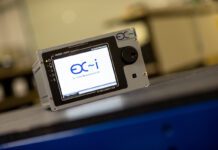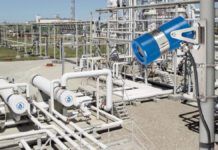Envirotec asked gas analysis expert Protea for some pointers about the use of IR-based gas measurement systems in applications like stack and marine emissions testing

IR measurement techniques for gas analysis exploit the fact that every type of molecule has a unique IR absorption spectrum – the particular frequencies at which it absorbs this radiation. This means almost any kind of gas can be identified by this kind of measurement (with the exception of noble gases and those comprising diatomic elements like H2). Beer’s law states that absorbance is proportional to the concentrations of the species in a sample, providing a means to determine the concentrations of particular gases.
Instruments based on this principle fall into two basic categories: Non-Dispersive IR (NDIR) instruments and Fourier Transform Infrared Spectrometers (FTIR). The first measures individual wavelength bands, while FTIR measures the entire IR spectrum simultaneously.
Where multiple gases have to be measured in a quick and accurate way, FTIR is an increasingly popular approach.
FTIR: How it works
FTIR works by scanning the entire IR spectrum of a gas sample. This can then be interrogated via the software in the device, to determine individual gas concentrations. The growing power and affordability of digital electronics has clearly been key to the technique’s rise. Protea, for example, a firm that describes itself as “a world leader in getting the most from this powerful technology” has developed algorithms to provide users with a lot of analytical power and flexibility.
The firm recently released its atmosFIR range of mobile FTIR analysers, using the same technology as a previous, fixed configuration system. The unit can monitor over 200 gas species, and has secured the Environment Agency’s MCERTS certification for the monitoring of about 10-12 gases – the ones where the EA has a regulatory commitment, and including things like CO, NO, NO2 and SO2.
The unit is certified in accordance with QAL1, a prerequisite for compliance with BS EN14181, a standard that relates to the quality assurance of CEMS used to measure emissions from processes covered by the Waste Incineration Directive (WID) and the Large Combustion Plant Directive (LCPD).
The instrument can be supplied in fixed or mobile configurations – a 1.8m-high cabinet or a large suitcase that can be carried.
The range of potential applications seems very wide indeed. Sales and marketing director Chris Daw cites research and exploratory applications, where there might be a desire to find out what gases are present in a particular process or system – the instruments have been used in this fashion with breathing apparatus used by the air force, and when identifying impurities that might be present in the hydrogen of a fuel cell.
Preparing for the 2020 sulphur cap
One growth area in the emissions testing field is with marine emissions, where instrumentation is assisting operators in preparation for the global 2020 sulphur cap, which aims to limit SOx emissions. Vessels can either run on the somewhat expensive 2020-compliant marine diesel or use plain old residual fuel, as long as accompanied by scrubbers to remove SOx. This has created a requirement to monitor and report on the emissions of these systems.
Protea has an ongoing deployment of ‘photometers’ in this application, which measure by selecting particular wavelengths of IR light to shine through a sample. The Procal 2000 – part of the Parker Procal range to which Protea acquired sole manufacturing rights in 2017 – is an IR, duct or stack-mounted analyser that can provide in-situ analysis of up to six gas-phase emission components.
It operates by firing a couple of mid-IR pulses into the exhaust system, at two specific wavelengths per target gas. One ‘measure’ pulse will be partially absorbed by the gases under examination, while a ‘reference’ pulse remains unaffected. And in this way up to six gases can be monitored simultaneously.
Daw says the firm is supplying in-situ photometers for some of the new cruise liners – “the very largest of ships”. Reliability is key here, he says, given the inconvenience of servicing such a system. Protea’s datasheets say the Procal 2000 “requires very little maintenance and achieves a class-beating up-time of over 98% in demanding applications”.
It is not as sensitive as FTIR but less complex. Protea’s atmosFIR FTIR instrument can measure at much lower ranges – around 20ppm for some gases compared to the photometer’s 100ppm.






